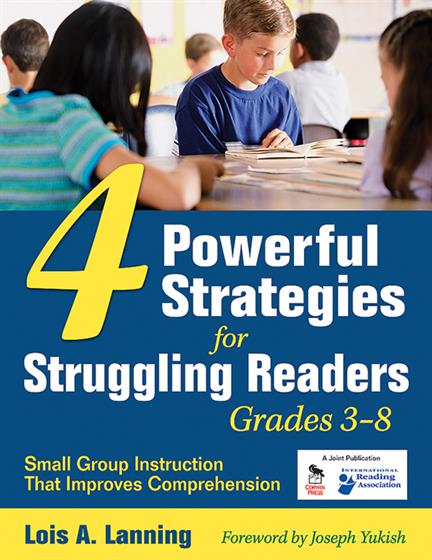Hands-on, Practical Guidance for Educators
From math,
literacy, science, equity, multilingual learners, and SEL, to assessment, school counseling,
and education leadership, our books are research-based and authored by experts
on topics most relevant to what educators are facing today.

Bestseller!
Four Powerful Strategies for Struggling Readers, Grades 3-8
Small Group Instruction That Improves Comprehension
By:
Lois A. Lanning
Foreword by Joseph Yukish
Focused techniques to help struggling readers strengthen comprehension skills!
This important resource presents four targeted, research-based strategies used by highly effective readers—summarizing, creating meaningful connections, self-regulating, and inferring—to help struggling readers understand what they read. The author examines how, why, and when to use each strategy and what each strategy looks like in practice. The book covers:
This important resource presents four targeted, research-based strategies used by highly effective readers—summarizing, creating meaningful connections, self-regulating, and inferring—to help struggling readers understand what they read. The author examines how, why, and when to use each strategy and what each strategy looks like in practice. The book covers:
- A gradual-release approach that leads to student-directed learning as skills increase
- Specific teaching techniques to use with each strategy
- Detailed lesson examples for reading instruction and content area reading
- Reflections in each strategy chapter
Product Details
- Grade Level: 3-8
- ISBN: 9781412957274
- Published By: Corwin
- Year: 2008
- Page Count: 176
- Publication date: July 23, 2008
Review Copies
This book is not available as a review copy.

